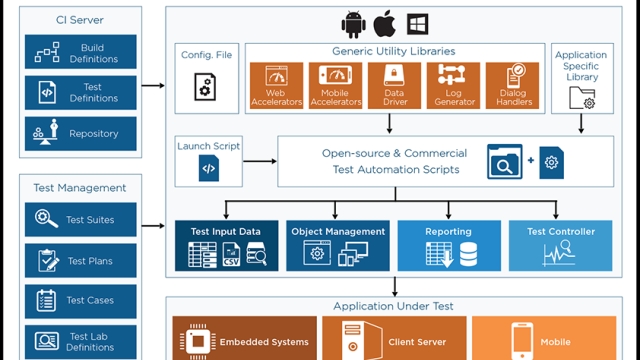
Welcome to the world of software testing, where the demand for speed, accuracy, and efficiency is ever-increasing. In today’s fast-paced digital landscape, organizations face the challenge of delivering high-quality software at a rapid pace without compromising on reliability. This is where the power of Rapid Test Automation and Test Automation Tools comes into play, revolutionizing the way testing is approached and executed. By leveraging automation tools, teams can accelerate the testing process, enhance test coverage, and ultimately drive value by detecting defects early in the software development lifecycle.
Codeless Automation Testing Tools
Benefits of Rapid Test Automation
Implementing rapid test automation brings a myriad of advantages to software development teams. Firstly, it significantly enhances efficiency by accelerating the testing process, allowing for more test cases to be executed in a fraction of the time it would take manually. This time-saving aspect enables teams to release products faster, keeping up with the demands of today’s fast-paced market.
Secondly, rapid test automation tools improve the overall test coverage by running tests continuously, ensuring that even the smallest functionalities are thoroughly checked. This comprehensive test coverage helps in identifying bugs early in the development cycle, reducing the cost and effort required for fixing issues at later stages.
Lastly, the use of test automation tools in a rapid manner boosts the overall quality of the software by providing reliable and consistent test results. Manual testing can be prone to human errors, but automation reduces such risks, leading to more accurate test outcomes. This increased precision translates to higher confidence in the product’s stability and performance.
Popular Test Automation Tools
When it comes to test automation tools, there are several that have gained popularity in the industry. One such tool is Selenium, known for its versatility and ability to automate web browsers across different platforms.
Another widely used test automation tool is Appium, which is specifically designed for mobile applications. Appium allows for testing on both iOS and Android platforms, making it a valuable asset for mobile app developers.
TestComplete is another tool that is favored by many QA professionals for its comprehensive testing capabilities. With features like scriptless test creation and cross-browser testing, TestComplete simplifies the automation process for testers.
Best Practices for Implementing Rapid Test Automation
Firstly, it is crucial to establish a clear strategy before diving into rapid test automation. This involves identifying the most critical test cases that will provide the highest ROI when automated. Prioritizing these test cases allows teams to focus their efforts effectively and ensure that automation efforts are aligned with business objectives.
Secondly, collaboration between developers, testers, and other stakeholders is key to successful implementation of rapid test automation. By fostering open communication and sharing knowledge across teams, potential roadblocks can be identified and addressed early in the process. This collaborative approach helps in streamlining automation efforts and ensures that all team members are on the same page.
Lastly, regular monitoring and optimization of test automation processes is essential to maximize the benefits of rapid test automation. Teams should continuously evaluate the effectiveness of their automated tests, identifying areas for improvement and making necessary adjustments. By monitoring key metrics and performance indicators, teams can adapt their automation strategy to meet evolving requirements and ensure long-term success.
